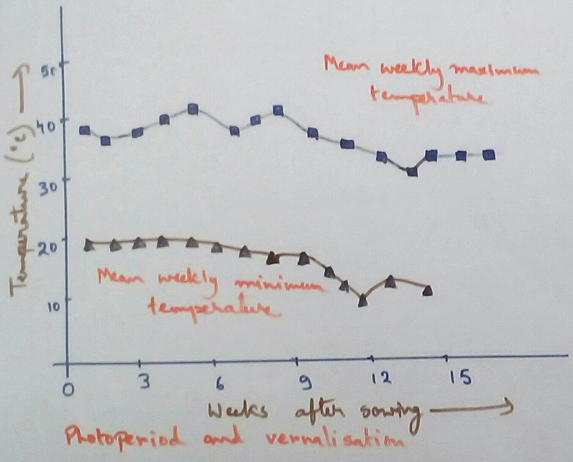Vernalisation in Plants
Definition of Vernalisation - The change of flowering habit due to the low temperature treatment is known as vernalisation.
This is a physiological process which was denoted by Clipart in 1857 invite but later it was explained and named by Lysenko in 1928. As like as photoperiodism vernalisation can also comes under the physiological preconditioning for flowering in higher plants.
Mechanism of Vernalisation - At first it was believed that cold stimulus was received by the apical Meristem but in 1964 valency have shown eat in lunar year that the meristematic cells of roots and leaves can also be the potential sites of vernalization. In 1939 milkers name the hormone 118 and said that it is to be the cause of vernalization. But till date it remains a postulated hormone which has not been isolated or identified but the positive effect of vernalization can be reversed by subsequent high temperature treatment which is known as de-vernalization.
Various requirements of Vernalization - Various requirements of vernalization are following -
* Continuous exposure to low temperature for a few days is essential.
* Sales should be actively dividing in nature.
* Proper nourishments should be provided.
* Proper hydration is essential.
* Cells should have aerobic respiration.
Devernalization - Devernalization is the process which can be done if vernalization is followed by unfavourable photoperiodic condition or reduced water supply for high temperature. In many cases uses of gibberellins can replace the requirement of vernalization because it stimulates vernalization and the stimulus of vernalisation is known as handling do it was still un identified. Vernalization does not pass from one plant to another through grafting except in some plants and vernalization is believed to overcome inhibitors and induce the synthesis of growth hormones like gibberellins it also prepares the plants for flowering.
From Vernalisation in Plants to HOME PAGE
Recent Articles
-
What Is Plasma? | Blood Plasma | Proteins | Nutrients | Cholesterol
Nov 07, 25 10:29 AM
Blood is a mobile fluid which is a connective tissue and is derived from the mesoderm like cell any other connective tissue. Colour of blood is reddish and that flows inside the blood vessels by means… -
Disorders of Respiratory System | Tuberculosis | Pleurisy | Emphysema
Oct 28, 25 11:39 PM
Tuberculosis is very common disease and is caused by a type of bacteria called Mycobacterium tuberculosis. This disease causes different trouble in the respiration and infection of several parts of th… -
Regulation of Respiration | Respiratory Centres | Inspiratory Area |
Oct 14, 25 12:13 AM
Respiratory Centre is the area that controls the rate of respiration and it is observed to be located in medulla oblongata and pons. Respiratory Centre has the following will dispersed components like… -
Explain Transport of Gases | External Respiration | Tissue Respiration
Oct 09, 25 11:35 PM
In humans gaseous exchange is completed in the following ways the steps are - External Respiration or Breathing - Breathing in false taking in of Oxygen and giving out of carbon dioxide in the body. M… -
Kind and Number of Teeth | Location of Teeth in Mouth | Care of Teeth
Sep 11, 25 12:52 AM
Kind and Number of Teeth






New! Comments
Have your say about what you just read! Leave me a comment in the box below.